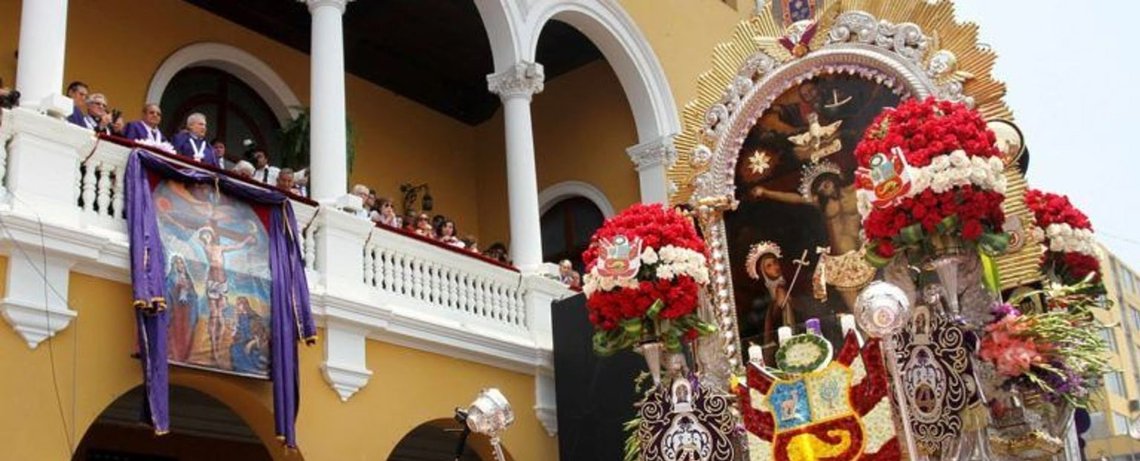Peruvian Culture: Celebration of Lord of the Miracles
This procession draws huge crowds from across South America to Lima, the capital of Peru.

Posted on Mon 21 Jan 2019
(El Señor de los Milagros), a.k.a Purple Month (Mes Morado). All of October, main days October 18th, 19th & 28th.
This procession draws huge crowds from across South America to Lima, the capital of Peru. The festival has its origins in the slavery of the colonial era, when a black Angolan slave drew a picture of Christ on the walls of his hut at the Pachacamilla plantation near Lima. The picture miraculously defied all attempts to erase it and survived the 1746 earthquake which demolished the surrounding buildings. As a result, the picture became the most worshipped image in Lima. The main day of the festival is now October 28, the anniversary of the 1746 earthquake.
Tens of thousands of followers flock to Lima to celebrate, with the faithful wearing purple robes, singing hymns and praying as they follow the painting on its litter. (Women who follow the Señor de los Milagros will often wear purple robes or dresses cinched with a white cord for the entire month.) This latter item weighs two tons and is carried by worshippers on its traditional 24-hour procession from the Las Nazarenas church to the church of La Merced in the Lima neighborhood of Barrios Altos. The traditional candy at this time of year is Turrón de Doña Pepa, a kind of sweet layer cake studded with colorful sprinkles on top. This sweet is ubiquitous across the city.
While the celebrations in Lima and Santa Cruz, Bolivia are enormous, Cusco’s are much more modest.